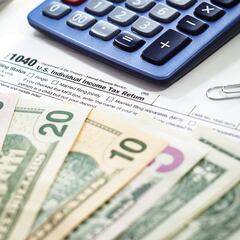How much is the standard deduction for 2024 income? How it works and who is eligible
A portion of American taxpayers’ earnings are exempt from taxation. This amount is known as the standard deduction and is adjusted each year.

The Internal Revenue Service announced that the 2025 tax season would kick off on Jan. 27 this year. American taxpayers will have until April 15, 2025 to submit their 2024 tax filing or request a six-month extension.
As Americans pull together all their documents and forms they should be aware that the standard deduction increased in 2024. The term ‘standard deduction’ is the earnings threshold below which you will not have to pay tax on your income. This either means that you can reduce your tax bill, or it could free you from income tax entirely.
Every year the IRS adjusts the amount of income that is exempt from taxation as well as the income threshold for tax brackets to account for inflation.
Standard deduction 2024
- Single; or Married and filing separately - $14,600
- Married filing jointly and Surviving spouses - $29,200
- Head of household - $21,900
Note, that dependents that can be claimed on another person’s tax return for the 2024 fiscal year are limited to a standard deduction of either $1,300 or your earned income plus $450, whichever is greater. However, the total can’t exceed the basic standard deduction for your filing status.
If your earnings are less than the above mentioned thresholds, then you will not be required to file a tax return in 2024. However there are some federal financial relief programs that require you to do so to claim the support.
Looking for answers to tax your tax questions? The #IRS website is the quickest way for taxpayers to get free tax help. See: https://t.co/AyvX5PvcOl pic.twitter.com/ibbRxqFLJm
— IRSnews (@IRSnews) March 6, 2025
What is the additional standard deduction?
Some earners are also eligible for an additional standard deduction, meaning that they can reduce their tax obligation or avoid federal income taxes entirely. If you are registered as blind or are aged 65 or older, you can claim the additional standard deduction.
Related stories
This amount is added to the regular standard deduction to increase the threshold for eligible taxpayers:
Additional standard deduction 2024
Taxpayers who are 65 and older or blind
- For single or head of household - $1,950
- For married taxpayers or qualifying surving spouse - $1,550
For more information on how to calculate your standard deduction for 2024, head over to the IRS’ preliminary instructions help page.



Complete your personal details to comment